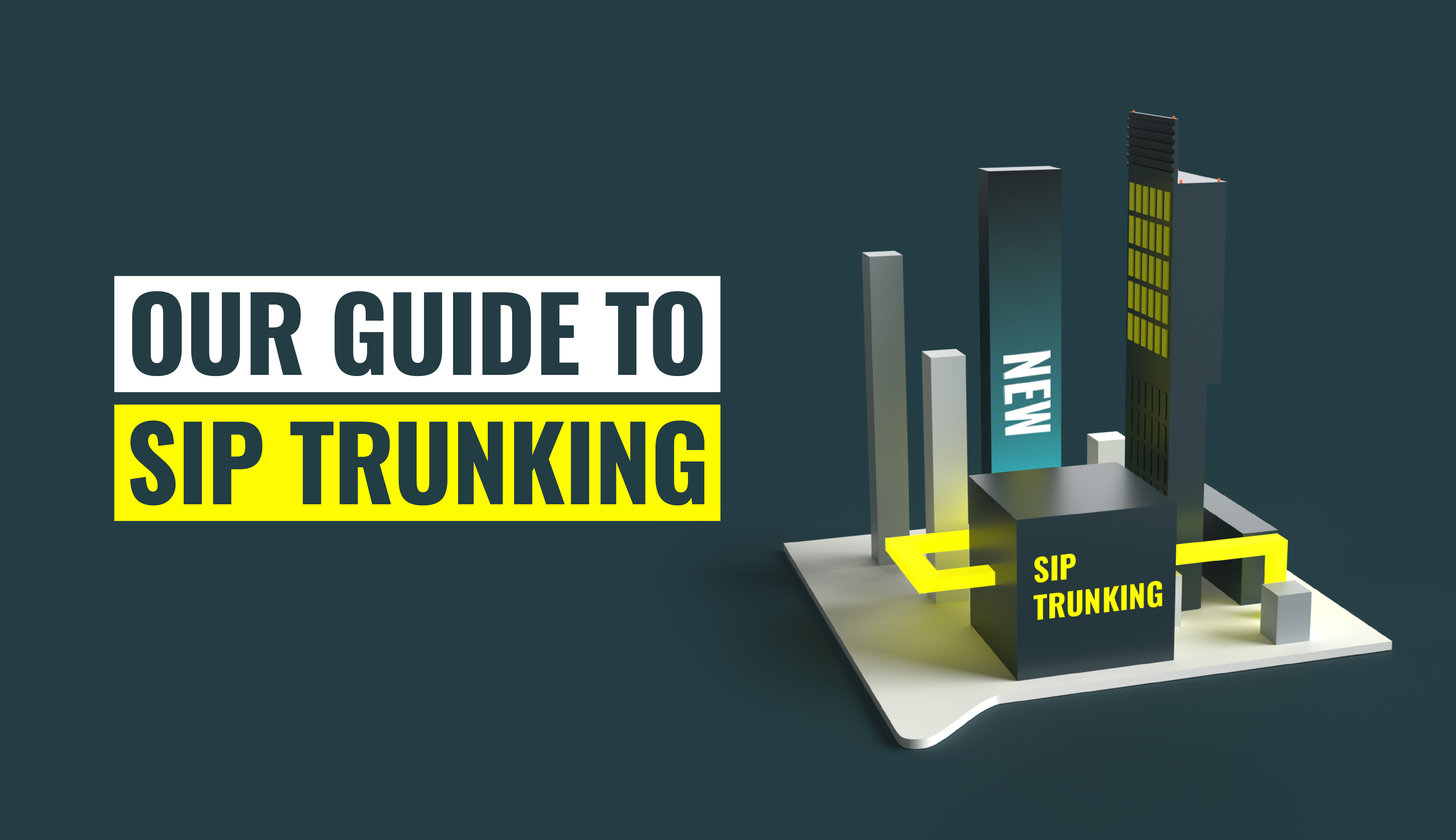Our Guide to SIP Trunking

If your business fields a lot of calls, or operates a call centre, chances are you’re using something called a PBX (Private Branch Exchange) to run all those concurrent calls.
However, the ISDN and PSTN networks – that most PBXs rely on to send calls from A to B – will be switched off by the end of 2025. This means businesses currently using PBXs need a new, future-proof connection to make those investments stretch further and ensure phone lines keep on ringing long into the future.
That’s where SIP Trunking can help. So, if you’ve heard of SIP Trunking, but don’t know what it’s about, then read on.
What is SIP Trunking and why do we use it?
SIP stands for ‘Session Initiated Protocol’, which means creating a connection between two points, in order to transfer data. This could be a voice or video call, a chat bot, or any other form of information shared between two devices.
SIP Trunking essentially takes the internet connection you use for voice services and splits it like branches coming off a tree trunk, so that all your employees can communicate through those individual branches. Hence, the name – SIP Trunking.
SIP Trunking connects your PBX to your provider’s network and then out to the wider public internet, so depending on your PBX and connectivity, calls can be taken anywhere – and we make sure that’s possible with our SIP Trunking.
Business challenges that SIP Trunking can solve
First of all, it’s futureproof. By the end of 2025, the ISDN and PSTN lines that we’ve come to know as ‘landlines’ will be switched off for good.
Many legacy PBX solutions operate on these soon-to-be-switched-off networks. Thankfully, many PBXs are SIP-compatible, meaning SIP Trunking is the perfect way to extend the life of most existing PBX systems.
Because SIP Trunks are managed virtually, it makes the process of adding new channels incredibly easy, sometimes only taking a very short time to add new users and assign a number to it.
SIP Trunking also enables businesses to manage costs, with rich reporting and spend-management tools, limiting the potential of PBX fraud while providing visibility across all associated costs.
Three SIP Trunking features that will help your business
If your business runs a PSTN- or ISDN-based PBX, you’re going to have to upgrade your voice services before the end of 2025, no matter what.
Easy to scale
Because SIP Trunking is a completely virtual communications solution, it’s super easy and quick to scale as your business needs change.
Spend management
When it comes to running a large number of phone lines, it’s hard to keep an eye on spend, especially when PBX fraud (when hackers set up calls from the business to a premium rate number) poses a constant threat.
With our SIP Trunking solution, we provide robust spend management tools that surface unusual spend patterns and make sure you know exactly what the service costs
Centralised call management
The optional SIP Trunk Call Manager Tool allows admins to manage hunt groups and IVRs, making it incredibly simple to tweak workflows and enhance the experience for callers.
If you choose to add it onto your system, SIP Trunk Call Manager portal also enables you to run reports on call performance metrics like call length, wait times and more, so you can keep an eye on productivity and make sure staff hit their targets.
Factors to consider when choosing a SIP Trunking provider
How many channels will you need?
With each SIP Trunk able to facilitate multiple channels, you’ll need to do some quick maths to decide how many channels your business will need, while bearing in mind that you’ll need to leave headroom for new starts and busy periods.
Though it’s important to note that not all your channels will be used all the time, and as a rule of thumb, you’ll need to ensure you’ve got enough SIP trunks for two-thirds of your lines to be calling at once. For call centres, this will be higher.
How much bandwidth?
Each of those SIP channels takes a tiny slice out of the total bandwidth that’s available to your business. If you consider how much your business relies on its internet connection – for email, browsing, communication, stock inventory, CRM systems and more – you may need a dedicated internet connection solely for your voice services, to make sure everything continues to work efficiently.
Resiliency
How much would an hour, or a day, of downtime cost your business? If even the thought of phone lines going silent is unacceptable, then you should consider one of our three resiliency options, that provide backup connections, just in case something happens to your primary connection.
What set-up does my business need for SIP Trunking?
First of all, you’ll need a SIP-enabled PBX, but if you’re not sure whether your PBX is SIP enabled or not, our team can help you figure it out.
You’ll also need an internet connection. We recommend a dedicated internet connection for your SIP Trunks to avoid bandwidth issues. It will allow us to provide you with end-to-end service assurance.
And that’s SIP Trunking in a nutshell. If you’d like to talk to us about your business, and how SIP Trunking can help future-proof and modernise your entire operation, feel free to call us on 03330 602 115.Or book a call and we’ll get in touch at a time that’s convenient for you.

